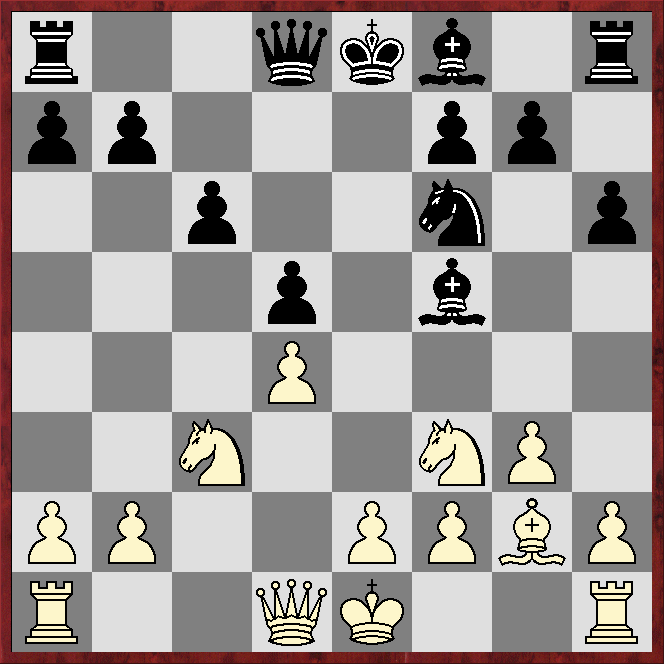English/QGD Exchange/Catalan
1.c4 e6 2.Nc3 d5 3.cxd5!? exd5 4.d4
ChessBase classifies this as "A17: English Opening: 1...Nf6 with ...Bb4."
4...c6
4...Nf6 transposes to the mainline of the Exchange Variation of the Queen's Gambit Declined, normally reached by the move-order 1.d4 d5 2.c4 e6 3.Nc3 Nf6 4.cxd5 exd5. White's early capture on d5 in the game gives Black other options.
5.g3
The point about 4...c6 is Black is ready to play ...Bf5, which is usually regarded as an equalising move in the Exchange QGD if it can be played without suffering a positional disadvantage. White can prevent an immediate ...Bf5 with 5.Qc2, but then Black can get it in anyway with the help of ...g6. Instead of trying to prevent ...Bf5, CL goes for a Catalan setup, albeit one in which White has exchanged early on d5.
5...Bf5 6.Bg2 Nf6 7.Nf3 Nbd7 8.Bg5!?
Normal is castling. The dark-square bishop does not seem to have much of a future on g5.
8...h6 9.Bxf6 Nxf6
*****
*****
*****
*****
10.0-0 Bd6 11.Rc1 0-0 12.Qb3 Qb6
Hungarian international master Miklós Galyas (2464) preferred 12...Qe7!? in a game in 2009, but his opponent was rated 369 points lower, so Galyas may have been avoiding simplification.
13.Nd2?
13.Qxb6 axb6 improves the black a pawn into a b pawn and gives Black a half-open a file - generally regarded as more than enough to compensate for contracting doubled pawns. Nevertheless that is better than the text,
13...Rfe8? 14.Rfe1?
Rather a comical case of mutual blindness in chess - the d4 pawn is hanging.
14...Qxd4 15.Rcd1Qb6 16.e4!?
Presumably hoping to initiate complications - otherwise White is simply a pawn down.
16...Bg4 17.Qxb6 axb6 18.f3 Be6 19.Nb3 Bb4 20.e5 Nd7 21.Re2 Ra7 22.Rc1 Rea8 23.a3 Be7 24.Nd4 b5 25.Nxe6 fxe6 26.Bh3 Kf7 27.f4
*****
*****
*****
*****
27...g6 28.g4 b4 29.f5!? g5
Keeping lines closed as much as possible, which is definitely better than 29...bxc3? 20.fxe6+ Kxe6?! (20...Ke8 is probably preferable) 21.g5+ etc.
30.axb4 Bxb4 31.Rcc2 d4 32.Ne4?!
Probably better, but still horrible for White, is 32.Re4.
32...d3 33.Nd6+ Bxd6 34.fxe6+ Kxe6 35.exd6+ Kxd6?
Clearly 35...dxe2 is correct.
36.Rcd2 Ne5 37.Bf1?
But 37.Rf2, for example, leaves White two pawns down and with what may be the inferior minor piece.
37...Nf3+ 38.Kg2 Nxd2 (0-1, 75 moves)


No comments:
Post a Comment